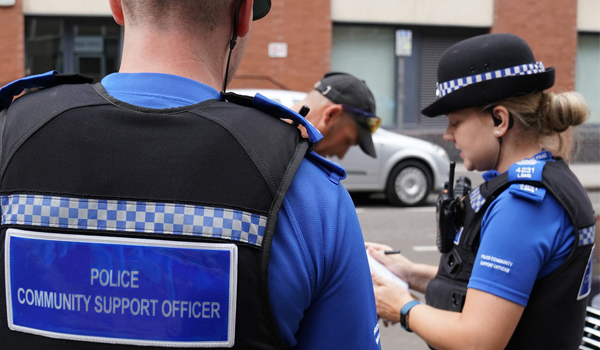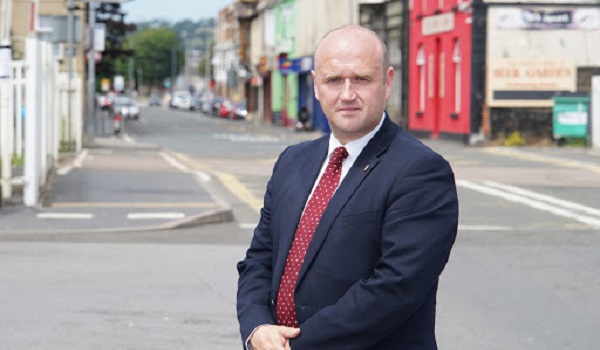Optimising local intelligence
Steve Dodd explains how intelligence-led neighbourhood policing can help tackle the levels of criminality that communities are now exposed to.
In an article in the latest edition of Police Professional (issue 715), I outlined an ambition for neighbourhood policing in 2025: the goal of an integrated community intelligence policy within the Neighbourhood Policing Pathway scheme.
The sophistication of artificial intelligence (AI) crime contrasted with the inhumanity of child sexual offences, the misogyny of violence against women and girls (VAWG) and domestic abuse or barbaric knife crime, warrants constant attention.
It is the role of commentators to observe, interpret and remark on events; likewise, it is the role of leading light doyens to suggest resolutions and specialists to present solutions. This is merely one approach as policing is multi-layered, blighted by conflicting opinion while governed by regional idiosyncrasies. Crime and criminal behaviour continue to attract considerable attention, rightly so as publication of disturbing events constantly dominate the media.
Here is a position: neighbourhood policing should be promoted as the primary communication channel between the general public and police.
Reassurance through contact, physical or visual, is the simplest way of restoring confidence in both policing by consent and trust in our officers. Technically sophisticated criminality, such as innovative economic fraud or cybercrime, do not cross the everyday path of members of the public; whereas domestic violence or VAWG, anti-social community violence, shoplifting, drug abuse and knife crime are at the forefront of local concerns.
Reassuringly there is an improved air of transparency entering public life; legislative interventions, comprehensive reporting, thorough investigative journalism and detailed scrutiny of the political class, is aided by an increased access to judicial proceedings. For example, in the Family Courts as of January 27, “accredited journalists can speak to families about their ongoing cases, report what they see and hear in court, and quote from key documents – provided they keep those families anonymous” (https://www.bbc.co.uk/news/articles/ckgrd7llzrgo)
A positive consequence of focused attention through impact policies will have immeasurable impact on people’s lives. Funding is essential to the equation; the Home Secretary published the 2025/26 Provisional Police Grant Report late last year, and on December 17, 2024, Dame Diana Johnson, Minister of State for Policing, Fire and Crime Prevention, provided a written statement on behalf of the Government. In it she set out the administration’s commitment to the Safer Streets Mission through a “£100 million to kickstart the first phase of 13,000 additional police officers, PCSOs and special constables into neighbourhood policing roles” (https://questions-statements.parliament.uk/written-statements/detail/2024-12-17/hcws325)
Following a period of consultation, the final Police Grant Report was published on January 30. Dame Johnson’s accompanying statement declared an increased commitment, an additional £1 million, to the provisional settlement, quoting: “This settlement demonstrates the Government’s continued commitment to putting officers back on the beat in communities across the country.” (https://questions-statements.parliament.uk/written-statements/detail/2025-01-30/hcws407)
On the same day, the British Retail Consortium (BRC) issued a press statement accompanying its 2025 Crime Survey Report under the headline, ‘Retail crime is spiralling out of control’. The foreword by chief executive officer Helen Dickinson OBE included the BRC’s observation: “Along with the promise of more community police officers, this Government is taking action that shows it understands the seriousness of the issue that the industry is facing.” (https://brc.org.uk/media/hmkpy3nl/crime-survey_2025_final.pdf)
Neighbourhood Policing offers considerably more than just an opportunity for restoring confidence of both rural and urban communities.
I have coined a sentence: ‘Everyone lives somewhere; everybody eats, drinks, shops; at one point in their life, they had a relative, some have neighbours, cars, pets, even gang members or associates; colleagues, club-mates, acquaintances, contacts, paramours, right down to the ubiquitous old school friend’.
Integration of a bobby into the heart of an identified ‘beat’, will afford, understanding, knowledge, insight and communication. I recently wrote: omnipotent neighbourhood policing is integration; it is the embodiment of community intelligence and evidence-based policing.
Community intelligence-led policing is the practical application of the methodology, the layers of detail, the insight and the theory. It is observation of neighbourhood cohesion; it is understanding the elements of community and its citizens within a collaborative police intelligence picture.
The task is foreboding, an ominous challenge as spheres of everyday life impact policing; a consequence is that each problem focuses further attention on law enforcement, providing opportunities to scrutinise, examine and question police action.
A recent illustration reported on was a ‘kamikaze’, phone shop attack in central London where video footage was widely circulated of the commission of the crime. The BBC quoted: ‘The Metropolitan Police said officers responded to the incident and carried out a search of the area. They were unable to locate the suspects, despite the fact that they were captured on video’ (https://www.bbc.co.uk/news/articles/cp82jvd3g54o)
Literal quotation or lack of context can convey a hypothetical reality, an imaginary interpretation of events, which has a two-fold effect. First, it negatively mythicises public assumptions, or it glorifies invincibility for the criminal perpetrators.
The BRC’s 2025 Crime Survey Report is a damning indictment on our society. The report’s figures have been widely broken-down and quoted publicly showing the cost to the economy of a sector that has a market turnover of £194 billion. The stark comparison in terms of human suffering on more than 1.1 million employees is unrecognisable with more than 401,000 banning orders issued by retailers in the 2023/24 period, a 146 per cent increase.
The statistic that only 32 per cent of incidents were reported to the police, of which only two per cent resulted in a criminal conviction, is a rude awakening, especially when considering the use of a weapon in a retail incident was up 180 per cent to 70 per day across the country (https://brc.org.uk/media/hmkpy3nl/crime-survey_2025_final.pdf)
Neighbourhood officers become a reassuring presence, a fixture no less. They are an oracle, a calming influence and the upright force. The duty of ‘policing purpose’ predisposes their every action, with local knowledge ingrained in their psyche.
Returning to the ‘kamikaze’ shoplifters; recognition of the perpetrators from the video footage is the precise local knowledge ‘their’ local neighbourhood officers would possess.
There is a solemn aspect, which is thought provoking in and of itself: would community officers have prevented some of recent atrocities? This will never be known, but furthermore it is disrespectful to the memories of those who have lost their lives.
What debate is drawing attention to is the discussion. A rhetorical question: will £2 billion of public money invested in local policing have an enormous effect on forces?
The salutary response is everything is relative; we are not talking statistics, we are examining the philosophy of neighbourhood policing, a theory acting as a guiding principle for policing action. Community intelligence-led policing is one manifestation, a methodology for intervention, action and understanding.
Post-incident analysis or retrospective cogitation merely highlights the negative, where focused attention is of benefit is in interpretation of future interactions with the general public, for example, the Glasgow ‘beastie house’. What impact could have neighbourhood conversations had on all persons in that locality?
Elsewhere, knife crime, a threat to the very fabric of society, was graphically presented across the country in July and August 2024 with rioting following the Southport stabbings by 17-year-old Axel Rudakubana.
At the time, The Guardian newspaper questioned the Prevent mechanism: “The critical question for filtering referrals is ‘What’s your ideology?’, but increasingly that’s a non-issue.”
The horrific circumstances surrounding the Southport killings have generated speculation and expert comment. The newspaper revealed that Rudakubana’s first referral to Prevent was by a teacher who saw him researching American school shootings during an IT class in late 2019, weeks before he launched a violent attack on a fellow pupil with a hockey stick.
In February 2021, as a 14-year-old, he was flagged again after posting images of Libyan dictator Muammar Gaddafi on Instagram, and two months later he was reported a third time over internet searches for the London Bridge terror attack (https://www.theguardian.com/uk-news/2025/jan/25/prevent-not-set-up-to-stop-killers-like-rudakubana-as-uk-terror-threat-changes)
And this month, the Internet Watch Foundation (IWF) welcomed the announcement by Home Secretary Yvette Cooper of a raft of new legislation designed to curb the rise of life-like child sexual abuse material generated by AI.
The IWF said the new rules will “outlaw the possession and distribution of AI models that have been optimised to create child sexual abuse imagery and will also criminalise the possession of manuals which provide instructions on how offenders can use AI to generate child sexual abuse imagery” (https://www.iwf.org.uk/news-media/news/new-ai-child-sexual-abuse-laws-announced-following-iwf-campaign/)
IWF analysts confirmed 245 reports of AI-generated child sexual abuse in 2024 compared with 51 in 2023, a 380 per cent rise. Of these reports, 193 involved imagery that was so realistic it had to be treated exactly the same as ‘real’ photographic imagery of child sexual abuse.
Derek Ray-Hill, interim chief executive of the IWF, said: “We have long been calling for the law to be tightened up, and are pleased the Government has adopted our recommendations. These steps will have a concrete impact on online safety.”
This is the level of criminality our communities are now exposed to.
Without reliable original source public communication, discussions will not enter policing’s intelligence channels, the precise data that law enforcement’s AI uses.
The implementation of a community intelligence-led policing methodology will galvanise neighbourhood policing; not add a further administrative burden, but provide the very material evidence-based policing’s matrices require.
Steve Dodd is a retired South Wales Police detective. He is a subject matter expert on police intelligence having authored the force’s Community Intelligence Force Policy. An adviser on the College of Policing’s Intelligence Professionalisation Programme, he was deployed on the Government’s working group on the Western Balkans Serious Organised Crime strategy. An international liaison officer, he is an international airline certified extradition officer, plus National Financial Investigator qualified. He is currently writing his ‘Community Intelligence-Led Policing Methodology’ including the octahedron pyramid, a transtheoretical approach, and an inverted strategy thesis.





